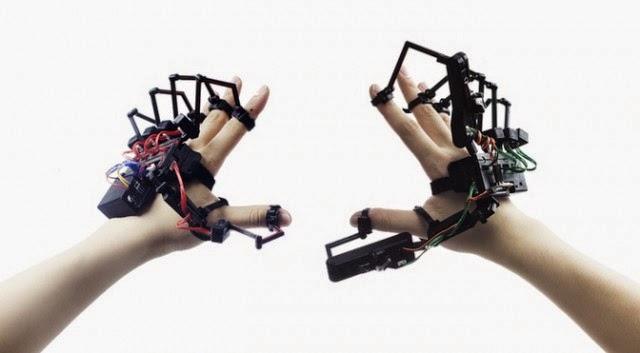Just two days after
jettisoning its last x86-oriented division to Lenovo,
IBM has unveiled the first servers based on the new Power8 CPU
architecture. Somewhat unusually, IBM’s press release for the new
servers directly attacks both Intel’s “closed and proprietary” way of
doing business and its products (IBM says Power8-based systems are
nearly 20% better on price-performance than x86-based systems). Is IBM
all bark and no bite? Or does the Power8 architecture and and OpenPower
Foundation (which now has 59 members) actually stand a chance against
Intel’s server monopoly? Let’s dive in and take a closer a look.
The new servers
First,
the new Power8 servers: There’s
the mid-range scale-out S822L and S824L, which can support up to two
12-core Power8 chips each (pictured above), and the high-end Enterprise
E870 and E880, which can accommodate up to 8 and 16 Power8 chips
respectively. The top-end E880, with its full complement of 16 Power8
chips, has 192 CPU cores — and 16 terabytes of RAM, 32 third-gen PCIe
x16 slots, and lots of other goodies. There’s even space for a DVD
drive. And don’t forget that each Power8 CPU core has 8-way simultaneous
multithreading (SMT) — so, on the 16-chip system you actually have up
to 1536 concurrent threads.
 |
| An IBM Power8 E880 server rack | |
The
S822L and S824L have a trick up their sleeves: They’re both outfitted
with a CAPI slot, which is essentially a direct link to the Power8 chip.
CAPI is where the OpenPower Foundation enters the equation: Because the
CAPI spec is fully open, hardware makers can create a whole host of
CAPI-enabled components. For example, Nvidia is designing a Tesla-like
GPU coprocessor that can plug straight in, providing even more
ridiculous levels of parallelism. Altera is designing CAPI FPGAs that
can be programmed for specific Big Data workloads, providing utterly
insane speed-ups (on the order of 1,000 times faster than a comparable
x86 system). I’m not sure why the E870 and E880 don’t have CAPI
capabilities.
For a lot more details on the Power8 architecture, CAPI, and the OpenPower Foundation, read our featured story:
IBM unveils Power8 and OpenPower pincer attack on Intel’s x86 server monopoly.
The new Power8 servers are available from October 31. Pricing starts at
around $8,000 for a single-socket S812L; for a 16-socket system, you’re
looking at hundreds of thousands of dollars, I imagine. (If a single
Power8 chip was available for OEMs, it would probably be priced at
around $5,000.)
Taking on Intel
The whole point of the
Power8 architecture and the OpenPower Foundation is to take down Intel’s
dominance of the server market — similar to how AMD and a few others
are trying (and failing) to
poke a hole in the low-power server market with ARM-based chips. Gartner estimates that Intel provided
92%
of all new server chips in 2013 — and IBM, and OpenPower members like
Nvidia and Samsung, want a piece of that incredibly lucrative pie. I’m
not a business analyst, but such a pincer attack seems like a smart way
to go about weakening Intel’s position — and it certainly helps that the
Power8 chip is monstrously powerful, and that the OpenPower
Foundation has almost every big hardware player except for Intel on its
roster.
 |
| Intel’s answer to the ARM threat: Bringing 15-core and 18-core Xeon parts down to mainstream servers (EP, as opposed to EX) | |
It will take a
lot
to unseat Intel, though. Something in the region of 95% of all servers
in the world are powered by Intel-x86 chips — and thus, most of the
software and hardware ecosystems are also x86-oriented. Power, Sparc,
and other
RISC-type chip architectures
have been trending towards obsolescence for a long, long time. I don’t
think it’s a coincidence that IBM — which itself is quite fond of
closed, proprietary tech — finally opened the doors on its Power
architecture to create the OpenPower Foundation. I don’t think it would
be unfair to characterize this as a last-gasp effort.
But hey, if
Power8 is really as powerful as IBM says, and if IBM and its OpenPower
partners really are serious about bringing to market solutions that can
flatten Intel/x86 in terms of performance and performance-per-watt, then
maybe this will be one of the few last-gasp efforts that actually pays
off. It’ll be an interesting few years, that’s for sure.










.jpg)




New Echo SmartPen